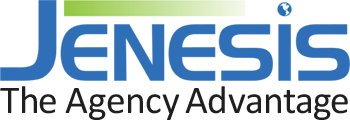
To build client loyalty in your insurance agency, you want to have a customer-first approach and prioritize the needs of your clients. But how do you do this? Take a closer look at what a customer-first strategy is and how to create one by anticipating your clients’ needs.
Understanding Customer-First Strategies
The first thing to do is understand what customer-first means. A customer-approach strategy is when your insurance agency anticipates client expectations and aims to optimize the customer experience at every touchpoint.
The goal of a customer-first strategy is to improve customer loyalty as well as overall revenue. With a customer-first strategy, you hope not just to meet customer expectations but exceed them. Being more client-oriented improves your ability to build a relationship with clients.
With a clear understanding of a customer-first strategy, explore some methods of incorporating it into your insurance agency.
Always Be Transparent
One of the simplest things you can do to establish a customer-first experience is to promote transparency. This is especially true if you can’t deliver on something you promised, whether a quote for coverage or a specific appointment time. If you aren’t successful with something, be honest with clients and tell them why.
If applicable, let them know how you are working to prevent similar issues in the future. Don’t let your clients think they will get the promised quote or coverage if it isn’t possible. Let them know right away.
Then, continue this transparency throughout the client experience. The right tools can help with this. For example, Jenesis has a Client Portal that displays updated client information, including their policies, payments, and more.
Be Proactive with Support and Communication
In addition to being open about setbacks, you just want the lines of communication to be open in general. Make sure that your clients know how to reach you in multiple ways. For example, list your agency’s contact numbers, email address, and social media profiles on your website and on the Client Portal.
You can also take this to the next level. In addition to the ability to reach your team, give clients access to the information they need without having to talk to customer service. For example, you can create a knowledge base or FAQ section on your website to answer common questions about insurance and insurance policies.
Another way to be proactive is to check up on clients regularly. Don’t just reach out to them right before a policy renewal or when they ask for an insurance quote. Send surveys or a simple email asking how things are going a few times a year. Or just send a message for special events as a subtle way to remind clients that the lines of communication are open. Classic examples of this would be a birthday email or holiday greetings.
Understand Client Personas
Your insurance agency has hopefully already created client personas as part of your marketing strategy. If you haven’t, now is the time to do so. A persona lets you better identify your typical or ideal client. This, in turn, lets you create marketing that appeals to them. But it also helps with a customer-first experience.
That is because if you have a customer persona, you can better predict what your clients want or expect from interactions. This will be even easier to achieve if you include the client’s goals in the personas.
Understand What You Are for Your Clients
Part of understanding your clients also means understanding your relationship with them. Make it a point to find out how your clients see you and what they want from your relationship. Do they just see you as an insurance salesperson who does nothing more than sell them insurance? Or do they see you as an industry expert ready to offer advice to find them the best insurance plan? This information will help you meet and exceed client expectations.
Adjust Your Offerings Based on Your Clients
As you create your client personas, you may also notice gaps in your insurance offerings. You may also find these gaps based on interactions with and feedback from clients. Keep these shortcomings in mind and figure out how to adjust your offerings. You can decide to work with another insurance carrier or expand into another category of insurance. Or maybe you can just extend your office hours to fit clients’ needs.
Get Feedback Regularly
As mentioned, part of a customer-first strategy is exceeding your customers’ expectations. But you won’t know whether you are doing this unless you ask. So, get in the habit of regularly asking for feedback via surveys. You can send these feedback forms a few times a year. Or just send them a few months before a policy renewal. As a bonus, this will give you time to correct any minor issues, in addition to giving you valuable feedback.
Conclusion
With a customer-first strategy, you will be better equipped to anticipate and meet your clients’ needs. Doing so will optimize your relationship with clients and encourage customer loyalty, boosting your bottom line.
